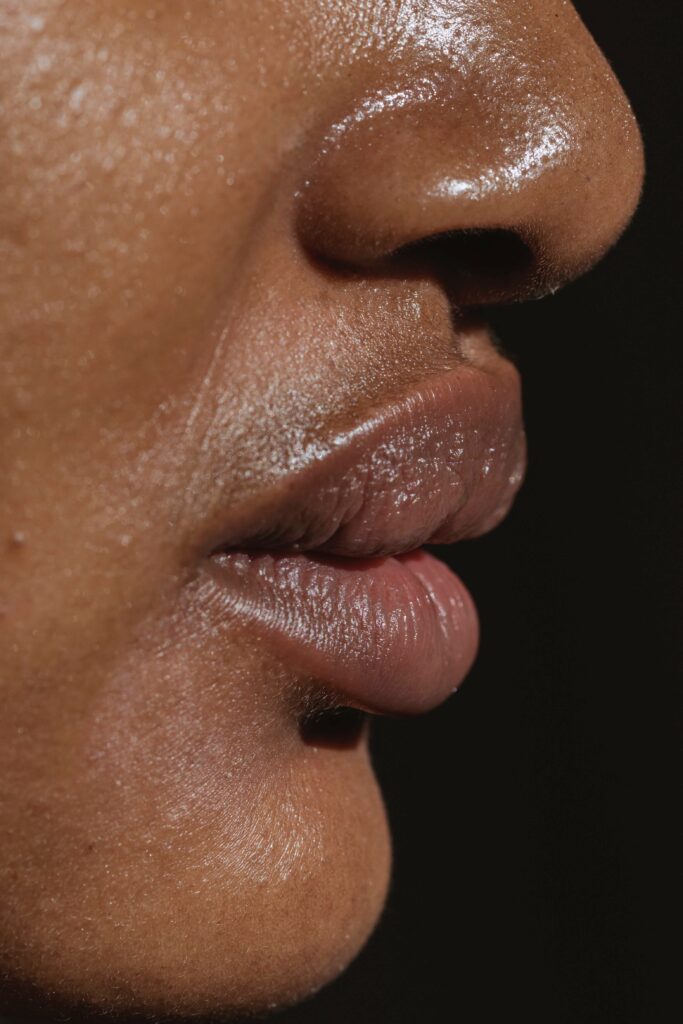Combination Treatments Are the Key to Caring for Your Skin
Combination skin is just that – skin that exhibits multiple characteristics. That can make keeping your complexion fresh, glowing, and healthy something of a challenge. The best approach is understanding how to deal differently with different areas of your face when designing your skincare routine.
The What and Why of Combination Skin
Most experts characterize skin as one of four types: normal, dry, oily, or combination. Normal skin is well-balanced, with fine pores, no blemishes, fresh color, and velvety, smooth texture. Dry skin feels tight, is rough and peeling in appearance, and looks dull, blotchy, and chapped. Oily skin has enlarged, visible pores and a glossy, greasy, all-over shine; it’s prone to comedo (blackheads and whiteheads) breakouts and acne, even becoming red, swollen, and painful. In combination skin, skin type varies from dry to oily in different parts of the face.
To determine if you have combination skin, look at your t-zone. That’s the skin across your forehead, extending in a line down your nose to the point of your chin. Having an oily, slippery t-zone, contrasting with cheeks and facial perimeter that feel flaky and scaly is typical of combination skin. Finding dry patches and acne breakouts simultaneously is another indicator. A blotting paper (available at any cosmetic store) can be helpful in knowing what you’re dealing with. Gently pat a tissue on different areas of your face, then hold the sheet up to a light to see what’s visible. If the paper stays dry when touching your cheeks but comes up greasy after blotting your forehead and nose, it’s combination skin
Several Factors
Several factors can cause combination skin, starting with genetics. Genetics regulate cell production, including the amount of sebum (oil) produced by your sebaceous glands. Sebum is a necessary part of the hydrolipidic film that covers your skin, protecting against bacteria, dirt, grime, and other external substances. Sebaceous glands and the skin pores that release sebum vary in size and amount of oil produced. More oil often means combination skin.
Hormones also play a role by overproducing oil in some areas while drying out in others. Oil skyrockets during puberty when hormone production peaks, leading to the all-too-familiar breakouts that plague teens and young adults. Hormones taper off throughout the 30s and 40s, along with the production of skin oil. By menopause, you may be left with dry skin only, making age another factor affecting your combination skin.
Environmental forces like climate, heat, humidity and time of the year are constantly impacting your skin as well. Hot weather and humid conditions cause glands to produce more oil and sweat, leaving your skin moist and shiny. During winter, cold, low humidity, and furnace heat strip natural oils. That means the oily and dry portions of your combination skin can shift seasonally, making periodic adjustments to care a good idea.

Balance Is the Secret
Keeping your combination skin healthy and happy involves applying different treatments to oily and dry areas. As a general rule, dermatologists and skin care specialists advise keeping things as basic and gentle as possible. For most of us, treating skin twice a day is enough – in the morning as part of removing sleep residue and preparing for the day’s activities, and in the evening to get rid of the makeup and impurities accumulated throughout the day.
The choice of products is very individualized. You may have to try several items to find what works best for you. Always take into account skin sensitivity. Some products may damage the skin because they’re too harsh, causing redness, burning, and even breaks on the surface.
Cleanser
In your oily t-zone, you want to remove excess secretions with a good cleanser. Experts recommend one that contains salicylic acid to reduce the build-up and clogging that lead to grimy skin and breakouts. Follow that with moisturizer – a water-based, oil-free, non-comedogenic product is a good choice. Apply lightly in the morning to keep skin breathable during the day; at night, a thicker layer of the same substance is okay for hydrating skin while you sleep. Don’t let concern with creating more oiliness scare you away from moisturizer. Keeping skin properly hydrated is important for all skin types and may help control oil production.
Use a different cleanser and moisturizer for your dry cheeks and jawline. Natural products that contain lactic or hyaluronic acids usually work great. Stay away from anything with alcohol or fragrance; both ingredients are drying. For moisturizer, a cream-based product is ideal for hydrating and restoring luster.
Makeup
Makeup matters too. You want to use silky, cream products on drier sections and perhaps a setting powder in areas vulnerable to shine. Noncomedogenic items are best everywhere because they minimize t-zone breakouts while moisturizing cheeks and jawline that are dry.
Some specialists advise the use of toner before applying makeup in the morning and after removing it at night. Toner is meant to remove traces of dirt, bacteria, and other residue while gently refreshing skin. Exfoliation is another technique included in some skincare routines. The purpose of exfoliating is removal of dead, dulling surface skin cells to improve tone, texture, and brightness, but be careful.
Since the process involves the use of chemicals, granular substances, or physical tools, exfoliating can injure skin rather than help it. At best, exfoliation should be used sparingly, once or twice a week. Toners and exfoliants are just two of the dizzying array of masks, mists, mitts, powders, serums, soothers, sprays, tonics, and washes competing constantly for your attention and money. Despite the temptation of jumping from product to product, you’re better off sticking with a routine long enough (at least a month) to see what works.
Should you experience severe flaking and broken, bleeding skin in dry areas or acne that’s extensive, swollen, and sore in oily zones, see a dermatologist for professional evaluation and treatment. Fortunately, that’s unusual. With judicious experimentation and lots of tender loving care, you’re perfectly capable of keeping your combination skin radiant and supple from the comfort of your own home.



